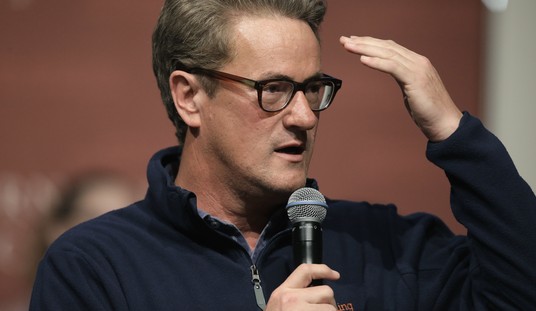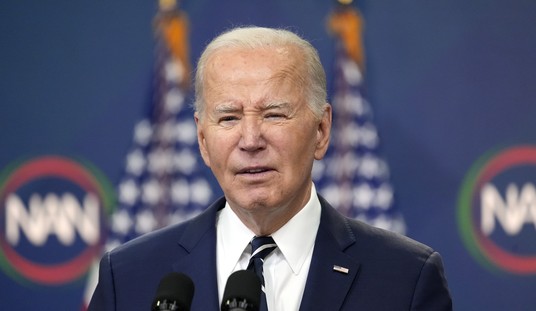The $787 billion economic stimulus package passed and signed into law last month had any number of co-sponsors in Congress, but in a real sense its main author was someone deceased for more than 60 years: John Maynard Keynes. The measure, and proposals subsequent to it, represent a tribute to a highly flawed, though highly original thinker. They also speak of a larger ongoing and recent pendulum shift in theory and policy.

Much has been written, and deservedly so, about President Obama’s sense of racial grievance; his radicalism; his circle of Chicago friends and fixers; and his intense identification with Abraham Lincoln. Yet only recently that level of attention has been given to his worldview, all but in name Keynesian, to the current economic crisis. The president and his neo-Keynesian top economic advisers – Lawrence Summers, Timothy Geithner and Christina Romer – have made clear by their actions that they view the private sector, left to its own devices, as incapable of sufficiently investing in education, health care, infrastructure, energy and other areas of national well-being. They warn that in absence of a greatly expanded public sector, the current business downturn will be even more prolonged and painful.
In his February 24 speech to Congress, Obama remarked, “Now is the time to jump-start job creation, restart lending, and in invest in areas like energy, health care and education that will grow our economy, even as we make hard choices to bring our deficit down.” Coming from a president, such words sound familiar. Bill Clinton incessantly justified his domestic program proposals as “investments.” George W. Bush didn’t, but he arguably did more in his last half-year in office to socialize the U.S. economy than any administration (including his own) had done during the previous 40 years. Actions speak louder than words.
Barack Obama, contrary to his manicured image as a “pragmatist,” is marked by certitude and grand vision. His flag is of bold colors, not pale pastels, and flies leftward. He’s making explicit, and seeks to make permanent, the ad hoc “new” New Deal instituted by his predecessor. By election eve, the Keynes revival already was well in evidence. Writing in Time magazine (November 3, 2008), columnist Justin Fox observed:
What we are seeing now in Washington and other world capitals is fear we might be headed for an economic collapse caused by a collapse of demand caused by a collapse of credit. Confronted with that threat, governments seemingly cannot help turning to the remedy formulated by Keynes during the dark years of the early 1930s: stimulating demand by spending much more than they take in, preferably but not necessarily on useful public works like highways and schools.
Recommended
He’s not the only pundit taking notice. “(T)he Keynesians are back – and economists across the spectrum are calling for government spending,” observed National Public Radio’s Adam Davidson and Alex Blumberg on the January 29 edition of “All Things Considered.” Progressive-left economist Jeff Madrick a year ago triumphantly declared our country to be at “the end of the age of Milton Friedman.”
All the signs are present: Keynes is making a comeback. For nearly three decades, the founding figure of modern macroeconomics had been in eclipse among economists and politicians taking their advice. Now that he’s taken center stage once more, a brief re-acquaintance would be in order.
John Maynard Keynes (1883-1946) was a Renaissance man, something even his foes concede. Educated at Eton and King’s College, Cambridge, he began as a mathematician, doing pioneering work on probability theory and earning the praise of Bertrand Russell. He was a Bloomsbury wit, a renowned art collector and a multimillionaire investor. About that last one, he made a fortune in the stock market, lost it in the Great Crash of 1929, and made it back again through bargain investing that could have served as a model for Warren Buffett. But it is his legacy as an economist, whether with the British government or with Cambridge, for which he is remembered.
Keynes’ best insights – and he did have some sound ones – tended to go unheeded. He warned, to no avail, of the consequences of imposing crushing reparations debt upon the defeated Germany following World War I. Had the victorious allies taken his advice at Versailles, the Germans most likely would not experienced civil war, runaway inflation, loss of national confidence and the rise of Adolf Hitler. And in 1925 he urged Chancellor of the Exchequer Winston Churchill not to return Britain to a prewar gold-based fixed monetary exchange rate. Churchill went ahead with his restoration plan anyway; Britain’s economy, and Churchill’s political career, each were worse for it.
“Keynesianism” would flower during the 1930s. Like all ideas, for better or worse, it has to be placed in historical context. John Maynard Keynes sought a way to stimulate investment at a time when it seemed to have evaporated. Here in the U.S. the situation had grown dire. Unemployment rose from a little over 3 percent in 1929 to 25 percent in 1933. Automobile production fell by 75 percent from a peak of 5 million. The M1 money supply (cash plus checks) contracted by 25 percent. Successful investors – which included Churchill as well as Keynes – took deep losses. People hoarded money in the face of price deflation. In absence of velocity, all the money in the world would be useless.
Government, Keynes argued, possessed the means to reignite investment and consumer spending. Yet he was not a socialist in the conventional sense. He cautioned that government should be the spender of the last resort. And he made no secret of his dislike of Marxism. In his 1931 book, Essays in Persuasion, Keynes wrote: “How can I accept the Communist doctrine, which sets up as its bible, above and beyond criticism, an obsolete textbook which I know not only to be scientifically erroneous but without interest or application to the modern world?” Moreover, inasmuch as he laid the foundation for a “Third Way,” he was an admirer of the classical liberal tradition. His defining work, The General Theory of Employment, Interest and Money (1936), referred to John Locke as “the great Locke.” That work bore the unmistakable influence of Bernard Mandeville’s Fable of the Bees, an early 18th-century allegorical poem which in recent decades has acquired libertarian cult status (it’s the one about private vices becoming public benefits). And though Keynes made clear his opposition to his great free-market rival, Friedrich Hayek, he wrote of Hayek’s 1944 work, The Road to Serfdom: “In my opinion it is a grand book…Morally and philosophically I find myself in agreement with virtually the whole of it: and not only in agreement with it, but in deeply moved agreement.”
Keynes saw classical theory as valuable, but limited in its ability to convey the larger picture. Without an alternative set of explanations, nations forever would lack the tools to mitigate and prevent depressions. “General theory,” as he called his thinking, could fill in the gaps of classical liberalism, in the process immunizing capitalism from overthrow.
The master word in Keynes’ arsenal was “aggregate.” Seen as separate entities, he argued, individuals and firms behave in rational ways. But as components of a national aggregate, they often behave highly irrationally, especially during a steep downturn. People being possessed a herd instinct – “animal spirits,” as he called them – they prefer short-term to long-term thinking. Thus, he argued, if an individual sees others as unwilling to invest or spend, that person likewise will be reluctant. This “paradox of thrift” is why people hoard even against their best judgment. Breaking the impasse would require long-term coordination of fiscal and monetary policy by a single entity; i.e., a central government.
The late Robert Heilbroner, in his classic book, The Worldly Philosophers, likened the Depression to a stuck elevator. “Rather than a seesaw which would always right itself,” he wrote, “the economy resembled an elevator: it could be going up or down, but it could also be standing perfectly still. And it was just as capable of standing still on the ground floor as at the top of the shaft.” Keynes purportedly had the antidote to this “stickiness”: centralized management of capital, credit and savings to achieve overall equilibrium. Properly synchronized, macroeconomic policy could end the Great Depression and guard against new ones. For him, general theory could conquer that age-old bugaboo, the business cycle.
Contrary to popular misconception, the administration of Franklin Roosevelt had little use for Keynes. Indeed, more than once it earned his rebuke. General theory would not become the accepted basis for economic forecasting and planning until the immediate aftermath of World War II, during which time Keynes died.
Did his ideas work? Neo-Austrian economist Robert Higgs argues they assuredly did not. Keynesianism merely gave the impression of working, he argues, because of price decontrol, deficit reductions and demilitarization – in other words, because of non-Keynesian measures. No matter. By the 1960s, “mainstream economics” and “Keynesian economics” meant virtually the same thing. Even the Kennedy White House’s proposed tax cuts (enacted under LBJ) were part of a larger policy of deficit spending. It was Milton Friedman, not future President Richard Nixon, as commonly believed, who stated in the mid 1960s: “We are all Keynesians now.” Friedman, in no way a Keynesian, uttered the words out of resignation, not celebration. The full quote was: “In one sense we are all Keynesians now; in another, no one is a Keynesian any longer. We all use the Keynesian language and apparatus; none of us any longer accepts the initial Keynesian conclusions.”
Eventually, many, if not most, economists would look for a new vocabulary and tools, a search prompted by the chronic inflation and unemployment (“stagflation”) of the Seventies. Stagflation, after all, was a logical impossibility in a Keynesian world. The election of Ronald Reagan as president in 1980, an unusually bad year for the economy, would accelerate the transformation of theory and practice.
The new revisionism took several forms: supply-side economics, which advocates maximizing favorable conditions for private investment, especially through tax reduction; rational expectations, which applies mathematical modeling to an assumption that people maximize their utility in accordance with market equilibrium; public choice, which holds that markets do not operate analogously to politics, and thus the latter must be made immune from capture by interest groups; and Austrian, which views economic decisions as rooted in participants’ subjective motives unknowable to government or any other outside entity.
Though these schools of thought differed in their frame of reference, and often dramatically so, they shared an assumption that markets are self-correcting, or at any rate too complex to be understood or controlled by a single force. In their view, voluntary contractual agreement best adjudicates conflicting interests. Prices, not plans, ought to guide decisions because no group of persons, no matter how well-informed and even sympathetic to the market, even can predict the future let alone impose it on others. Ronald Reagan’s presidency, though by political necessity often Keynesian in practice, moved market-based theory away from the fringes and into the mainstream. Indirectly, it led to economic growth in America and throughout the world – and well after Reagan’s departure from office.
Yet despite Keynes’ “fatal conceit” (to use Hayek’s term) of assuming the possibility and desirability of central coordination of market knowledge on behalf of the great many, he remained on standby. And now in this, the age of Obama, he’s been pressed into full-time active duty once again, and with a hard-left turn. The White House economic agenda, regrettably, is meeting with only modest resistance from the business community. Nobel laureate Robert Lucas, a leading proponent of the rational-expectations school, puts it this way: “I guess everyone is a Keynesian in a foxhole.”
With the global financial system now in disarray, there is an ever-rising demand for foxholes. Barack Obama’s election as U.S. president, dismaying as it was to any supporter of liberty, was no fluke. It rode an inchoate tidal wave of public disgust with behavior in the financial industry’s executive suites. That this behavior was exacerbated by government favoritism was something his supporters chose not to see. But Obama is not something new under the sun despite his campaign theme of “change.” Like the Clintons, only more so, the new president combines a progressive’s desire to redistribute wealth and power with a Keynesian’s faith in government expenditure as a corrective to downturns in private investment. Even new-school Keynesians such as Greg Mankiw (Harvard) and John Taylor (Stanford) dismiss as absurd the idea that the Obama stimulus plan will create millions of jobs. Coupled with continued Third World mass immigration, the stimulus can be seen as a plan for eliminating private-sector jobs.
Keynes wrote, famously, in the last paragraph of his General Theory: “Practical men, who believe themselves to be quite exempt from any intellectual influences, are usually the slaves of some defunct economist. Madmen in authority, who hear voices in the air, are distilling their frenzy from some academic scribbler of a few years back.” On that, he surely was right. President Obama and his economic team might not be consciously invoking Keynes, but they are ratifying his legacy all the same. And the stimulus plan is only the beginning.

























Join the conversation as a VIP Member